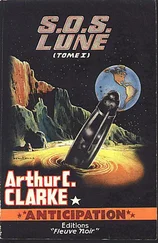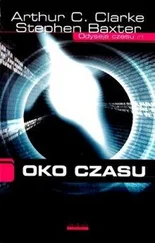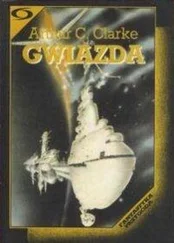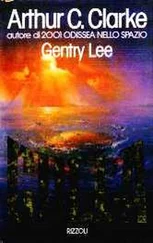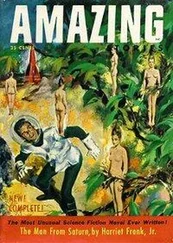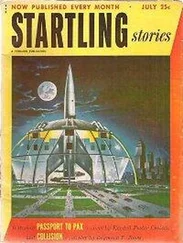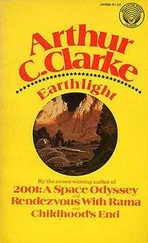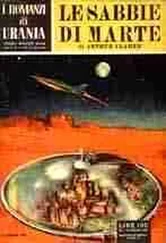Some forces were left behind to garrison Mongolia itself, and to continue the task of piecing together what had become of the empire. The garrison would be left under the command of one of Genghis Khan’s sons, Tolui. Genghis Khan was not significantly weakened by leaving Tolui behind. As well as his chancellor Yeh-lü he had with him another son, , and his general Subedei. Considering that was the man who would have succeeded Genghis Khan in the old timeline, and that Subedei was perhaps Genghis’s most able general—the man who would have masterminded the invasion of Europe after Genghis’s death—it was a formidable team indeed.
Kolya witnessed the moment when Genghis Khan took leave of his son. Genghis drew Tolui’s face to his own with his two hands and touched his lips to one of Tolui’s cheeks, inhaling deeply. Sable dismissed it as an “Iron Age air-kiss.” But Kolya was oddly moved.
At last Genghis’s standard was raised, and with a clamor of shouts, trumpets and drums, the force set off, followed by long baggage trains. The three columns, under the command of Genghis, and Sabutai, were to travel independently, perhaps diverging hundreds of kilometers from each other, but they would keep in touch daily, through fast riders, trumpet blasts and smoke signals. Soon the great clouds of kicked-up dust were separating across the plains of Mongolia, and by the second day the forces were out of each other’s sight.
***
Traveling west from the region of Genghis Khan’s birthplace, they followed a tributary of the Onon river through a country of rich meadows. Kolya rode in a cart with Sable, Basil and other subdued-looking foreign traders, and some of Yeh-lü’s staff. After the first couple of days, they entered a country of gloomy, somewhat sinister forests, broken by boggy valleys that were frequently difficult to ford. The skies remained leaden, and the rain beat down. Kolya felt oppressed in this dismal, gloomy place. He warned Yeh-lü about acid rain, and the administrator passed on orders that the soldiers should ride with their caps on and collars raised on their coats.
Genghis’s troops were no more hygienic than the common Mongols. But they took pride in their appearance. They rode on saddles high at the back and front, with solid stirrups. They wore conical felt caps, lined with fur from fox, wolf or even lynx, and long robe-like coats that opened from top to bottom. The Mongols had worn such garments since time immemorial, but these were a wealthy people now, and some of the officers wore coats embroidered with silk or gold thread, and silken underwear from China. But even Genghis’s generals would wipe their mouths on their sleeves, and their hands on their trousers.
The Mongols’ field craft was slick and practiced—but then it was the product of centuries of tradition. The march was broken each night, and rations distributed: dried milk curd, millet meal, kumis, an alcoholic drink made from fermented milk curd, and cured meat. In the morning a rider would put a bit of dried curd and water into a leather bag, and the shaking as he rode along would soon turn it into a kind of yogurt, consumed with great relish and much belching. Kolya envied the Mongols’ skills: how they made rawhide from cow skin, even how they used a distillate of human urine as a purgative when one man had a fever.
Genghis’s army moved efficiently, and orders and changes of plan were transmitted rapidly and without confusion. The army was rigidly governed by a hierarchy based on rules of ten. That way, the chain of command was simplified, with each officer having no more than ten subordinates. The Mongols empowered their local commanders as much as possible, which enhanced the army’s flexibility and responsiveness. And Genghis made sure that all units of his army, down to the poorest platoon, was made up of a mix of nationalities, clans and tribes. He wanted nobody to have any loyalty, save to the Khan himself. It was, Kolya thought, a remarkably modern way of structuring an army: no wonder these Mongols had overwhelmed the ragbag forces of medieval Europe. But the system relied heavily on efficient and loyal staff. The officer corps was ruthlessly weeded out in training, through such tests as the battue— and, of course, in battle.
After a few days, still deep in the heart of Mongolia, the army crossed a grassy plain toward Karakorum. This city had once been the power center of the Uighurs, and Genghis Khan had established it as his own permanent seat of power. But even from a distance Kolya could see the city’s walls were ruined. Inside the walls a few abandoned temples huddled in one corner, but the rest of the city had been conquered by the eternal grass.
Genghis Khan himself, accompanied by burly guards, stalked with around this place. To Genghis it was only a few years since he had established the city, and now here it was, eroded to rubble. Kolya saw him return to his traveling yurt, his face like thunder, as if he was angry with the very gods who would make such a mockery of his ambitions.
***
In the days that followed the army passed through the valley of the Orkhon river, an immense walled plain bounded to the east by blue mountains. It was almost like a Martian vallis, Kolya thought idly. The earth here was gray and flaking, the river languid. Sometimes they had to ford tributaries and river channels. At night they camped on islands of bare mud, and made huge aromatic fires of dead willow wood.
They crossed one last river, and the country began to rise. Sable said they were leaving the modern Mongolian province of Arhangay, and crossing the Hangay massif. Behind Kolya, the country folded up into a complex patchwork of forests and valleys, but beyond the massif he could see a more elemental landscape of yellow grassland stretching away.
At the massif’s broad summit there were many small ridges and folds, littered by shattered pebbles, as if many time slices had crisscrossed. But a cairn stood here, a heap of stones that had somehow survived the time shocks. As the army passed each man added a pebble or rock to the cairn. Kolya saw that by the time they had all gone by it would be a mighty mound.
They descended at last to the steppe. The massif receded over the horizon, leaving nothing but flatness, and they walked across a treeless plain where the long grass rippled around the horses like parting water. As the world opened up around him, the immense scale of central Asia at last diminishing even Genghis Khan and his ambitions, Kolya felt a huge relief.
But they encountered no people. In this huge place there could sometimes be seen the circular shadows of yurts, the scars of fires, the ghosts of small villages packed up and moved on to another pasture. The steppe was timeless, people always lived here much the same way, and these scars could have been made by Huns, Mongols or even Soviet-era Communists—and those who left these shadows might have walked across the plain and into another time entirely. Maybe, Kolya thought, when the last shreds of civilization wore away, when the Earth was forgotten and nothing was left but Mir, they would all become nomads, drawn into this great pit of human destiny.
But no people. Sometimes Genghis would send out search parties, but nobody was found.
Then, lost in the middle of the steppe, the scouts unexpectedly came upon a temple.
***
A party was sent ahead to investigate. Yeh-lü included Kolya and Sable, hoping that their perspective might be of use.
The temple was a small, boxlike building with tall doors, ornately carved and decorated with lion-head knockers. Out front was a porch framed by lacquered pillars, and the beams at the top were decorated by gold skulls. Kolya, Sable and some of the Mongols stepped cautiously inside. On low tables manuscript rolls had been set out amid the debris of a meal. The walls were wooden, the air full of strong incense, and the feeling of enclosure was powerful.
Читать дальше

